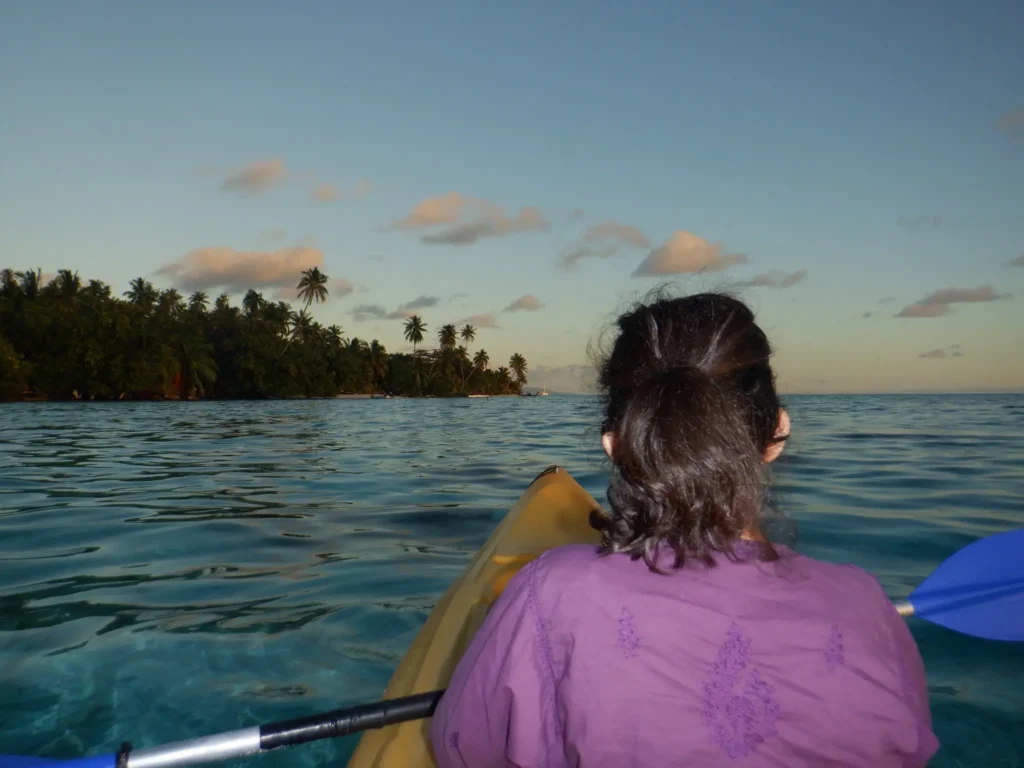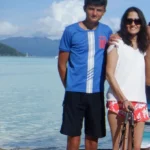By Jan Bonville

Listen to this Article
You can get there. Good luck trying to leave!
The isles of Tahiti are breathtaking. The first sighting of the majestic, jagged peaks framing the deep blue-green of the lagoons, pink-white sands barely fine enough to sift through your fingers, the myriad of colors of fish under the warm, clear surface of the water simply stuns your senses.
I have had the pleasure of visiting Tahiti several times through a variety of life stages: twice as a couple, and twice with children, first young and then older teenagers. A constant throughout these trips was my declining mobility. I have had multiple sclerosis, a degenerative neurological condition, for over two decades. With each trip, my mobility slowly but surely declined. My first visit required no walking aids, the second, one cane, the third and fourth, two canes and a walker.
My most recent experience was at the Le Taha’a Resort, which is on a motu, or, a mini-island around an atoll. The Merriam-Webster definition of a motu is “a Polynesian reef islet with vegetation.” Accurate, but boring! I would define a Tahitian motu as the very definition of Paradise itself…. imagine a faraway isle with fine sand clean and soft as snow, views of the majestic Bora Bora volcanic peaks, with nothing around you other than miles and miles of the endless blue of the Pacific Ocean. Nobody, nothing to disturb you, other than your travel companions and fellow island dwellers, and your own thoughts and dreams. There is, as far as I know, no equivalent for a Tahitian motu. For those of us like me who get emotional nourishment and pure joy from secluded, immersive nature experiences, Le Taha’a’s beauty, hospitality and incredible welcoming spirit makes it my version of island paradise.
However, for someone with a mobility disability, island paradises are challenging. Getting to Taha’a is no small feat. The logistics involve small planes and boats, moving on the sand, getting in and out of the water and navigating uneven terrain. It is more difficult to get to Taha’a than to the volcanic islands of Moore’a or Bora Bora, (also beautiful and stunning, which I will save for another story.) From the capital of Papeete, where international flights land, one takes a small plane to the island of Raiatea, then goes to a boat dock where the island resort boat meets you. For those of us who are mobility impaired, the prospect of getting from a dock onto a boat, maintaining balance in said boat, getting back out onto the hotel dock and then onto sandy ground which is uneven at best, is daunting.
I alerted the hotel ahead of time that I needed help. When you ask for help in Tahiti, you will get it. From the moment we went to the dock, I was met with kindness, empathy, and warmth. Once at the resort, I was helped to disembark, and we were shown to our lodging, a family villa on the beach. While this was not exactly wheelchair accessible, it was flat, easy to navigate inside, and spacious. The grounds of the resort had paved paths which I was able to navigate with canes and an elevator to go to the restaurant nestled in the trees with views of the gardens and ocean. As the resort is hard to get to, it is secluded and calm, a must for a disabled nature lover like me.

Tahiti is known for acceptance and openness, particularly as an accepting destination for LGBTQ travelers due to its history and culture. I have to say I did not see any other travelers with visible disabilities. Nonetheless, I did feel welcome and included. I am fortunate that my husband and sons are able bodied and can help me. I had to be resourceful at times to the point of comedy: since I cannot really move on sand, I’d slide down on my bottom from the villa to the water’s edge, allow myself to be lifted like a rag doll onto and off the kayaks, and required my husband’s assistance to get in and out of the tub surrounded by tropical flowers. I definitely had my share of inelegant moments. But, who cares?! I was in Tahiti!
The magic of Tahiti is that, thanks to the stunning landscapes and the gentle lagoons, much of this experience does not, in fact, require a lot of mobility. The water in the lagoon is shallow, warm and calm. Being in or on the water in a kayak or boat provides an experience not too dissimilar from that of able bodied travelers. The fish and coral, the views and the sunsets are the same whether you are mobile or not. The most precious moments, in fact, came while staying still: sitting outside the villa, watching my children play in the aquamarine waters of the lagoon with the palm fronds overhead, lowering myself into the heavenly warm, clear water and simply sitting still, observing the fish play around my toes. Every evening an hour before sunset, we took a magical kayak ride along the length of the motu to see the sun setting over the ocean and the mountains of Bora Bora. This involved me struggling a bit to get into the double kayak, again, with help, but —once I was there, sitting still in the kayak, the calm lagoon water lapping at the paddle, enjoying the skies and views, my experience was no less dimmed by not having use of my legs.
There are, of course, many things I could not do. A snorkeling area involved swimming in a current that was too strong for my limited upper body strength. I could however snorkel in the lagoon, which as often is the case in Tahiti was calm and shallow, and did not require a lot of strength. I no longer have the leg strength to swim very much so my snorkeling experience involved laying still, close to the surface- still magical, but I could not swim to follow sea turtles like others did. I could not have managed the kayak, or the boat, without help, but help was ready and available.I had to explain what I needed ahead of time and be ready to accept manual help, from the resort and my own family. I would not have been able to access the restaurant at all without the elevator, and the paths were narrow and not perfectly maneuverable, though not unfeasible, due to being flat. But as a person with a disability I am used to everything being more complicated and more difficult. And difficult does not mean impossible.

It is not easy to get to a place like Taha’a and once there, you need to be creative and resourceful- and importantly, ask for and accept help. You need to be okay with not being able to do every activity offered and be creative. Since we last went, my mobility has now declined to the point where I need a wheelchair to move around. I will need even more help than I did the last time.

But I will go again. I don’t plan to give up the experience of the magical sunsets over Bora Bora, the gliding evening kayak rides and the complete sensation of silence and tranquility that comes from being at the edge of the world. It will be a challenge, but that makes it all the more worth it.
